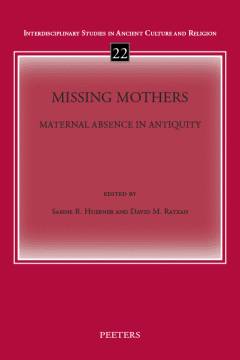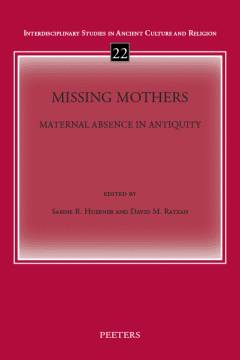
- Afhalen na 1 uur in een winkel met voorraad
- Gratis thuislevering in België vanaf € 30
- Ruim aanbod met 7 miljoen producten
- Afhalen na 1 uur in een winkel met voorraad
- Gratis thuislevering in België vanaf € 30
- Ruim aanbod met 7 miljoen producten
Zoeken
Missing Mothers
Maternal Absence in Antiquity
€ 75,00
+ 150 punten
Omschrijving
The last forty years of research have cast new light on the lives of ancient Mediterranean women in the penumbra of our patriarchal sources, including the pervasive risks they faced in becoming mothers. Current demographic models suggest that perhaps as many as one in five children would have lost their mothers by age ten. The inescapable conclusion is that the absence of ancient mothers is not merely an artifact of bias in our sources, but also a fundamental condition of antiquity, with profound implications for ancient family life and the experience of childhood. Missing Mothers: Maternal Absence in Antiquity is the first volume dedicated to studying mother absence as an integrated phenomenon in the ancient Mediterranean, from its obvious manifestation as total absence in the wake of maternal death, to the partial absences of maternal separation brought about by economic necessity, divorce, slavery, social conventions, and occasionally choice. The fifteen essays collected here explore the gaps left by absent mothers and how individuals, families, and societies in the ancient Mediterranean conceptualized, represented, and responded to those gaps, practically, psychologically, artistically, and politically between the 5th century BCE and late antiquity.
Specificaties
Betrokkenen
- Uitgeverij:
Inhoud
- Aantal bladzijden:
- 357
- Taal:
- Engels
- Reeks:
- Reeksnummer:
- nr. 22
Eigenschappen
- Productcode (EAN):
- 9789042943131
- Verschijningsdatum:
- 13/09/2021
- Uitvoering:
- Paperback
- Formaat:
- Trade paperback (VS)
- Gewicht:
- 3347 g

Alleen bij Standaard Boekhandel
+ 150 punten op je klantenkaart van Standaard Boekhandel
Beoordelingen
We publiceren alleen reviews die voldoen aan de voorwaarden voor reviews. Bekijk onze voorwaarden voor reviews.










